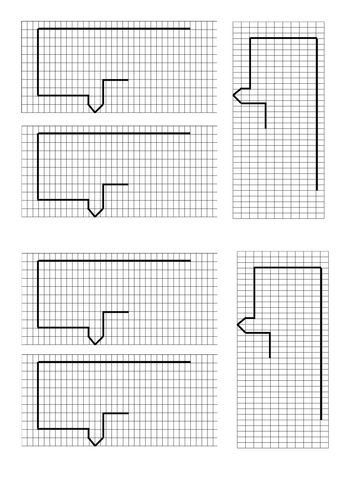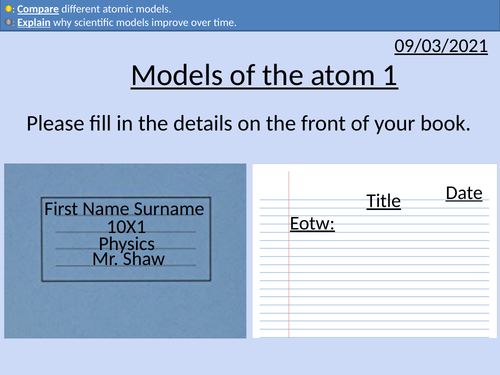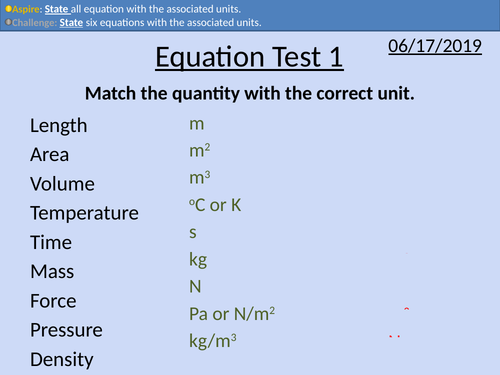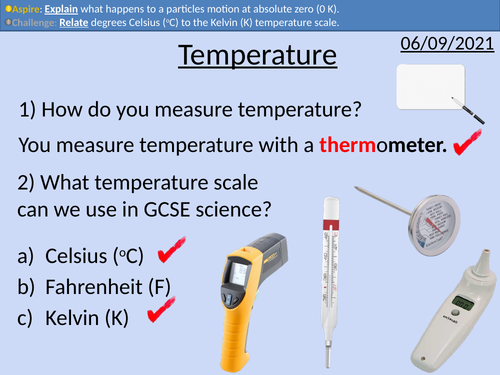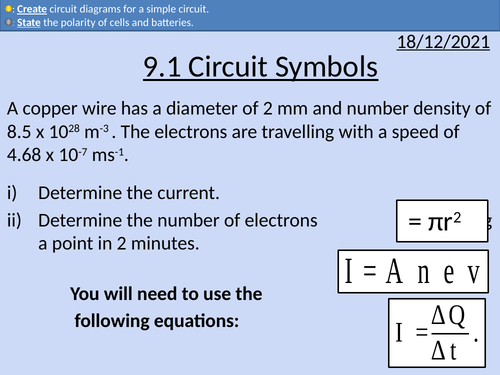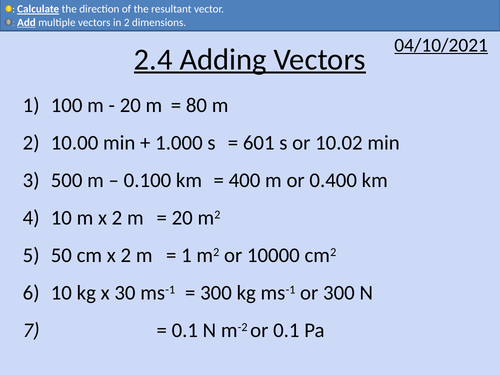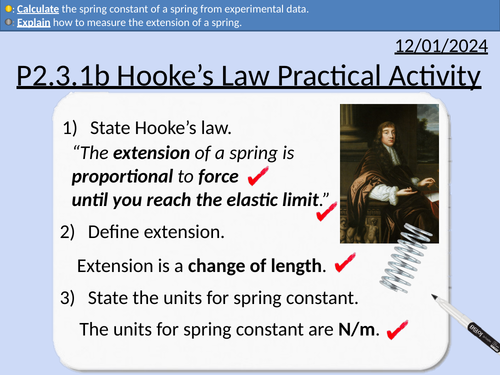484Uploads
145k+Views
63k+Downloads
Physics
Bundle

GCSE Physics: Physics on the move
This bundle of resources contains 12 lessons for OCR GCSE Physics: Physics on the move.
This is a perfect set of lessons to start your GCSE physics course in year 9 as each lesson builds from the last and doesn’t presuppose any other GCSE physics knowledge.
Scientific definitions from working scientifically
Maths skills and rearranging equations
Planning Experiments
All lessons have worked examples, questions for students, and plenary activities.

GCSE Physics: Balanced Forces
This PowerPoint presentation with worked examples and student questions covers:
Balancing forces with vectors
Accelerations and resultant forces

GCSE Physics: Constructing Circuits
This PowerPoint presentation with worked examples and student questions covers:
• Constructing Series Circuit
• Constructing Parallel Circuits
• Analysing results for Potential Difference
• Analysing results for Current
• Clear resource list, diagrams and photos to aid teaching.

GCSE Physics: Efficiency and Sankey Diagrams
This PowerPoint presentation with worked examples and student questions covers:
• Definition of efficiency
• Analysing and constructing Sankey diagrams
• Using the efficiency equation
• Rearranging the efficiency equation

GCSE Physics: Development of the Atomic Model 1
This presentation includes:
What is a scientific model
Why scientific models change over time
The Ancient Greek Model
John Dalton’s Model
Thomson’s Plum-Pudding Model

GCSE Physics Equation Tests
Included are 9 lessons with tips on how to learn the equations for GCSE Physics.

GCSE Physics: Temperature Scales and Changes.
This presentation covers:
Celsius and Kelvin temperature scales
Physical and Chemical Changes
Absolute zero

OCR AS level Physics: Circuit Symbols
OCR AS level Physics: Circuit Symbols is a part of the Module 4: Electrons, Waves, and Photons.
Presentation come with worked examples, solutions and homeworks.
All circuit symbols required for OCR A level physics
Polarity of cells and batteries
Electron flow and conventional current

OCR AS level Physics: More Vectors
OCR AS level Physics: More Vectors is a part of the Module 2: Foundations of Physics
Presentation come with worked examples, solutions and homeworks.

OCR AS level Physics: Derived Units
OCR AS level Physics: Derived Units is a part of the Module 2: Foundations of Physics
Full lesson PowerPoint with worked examples and homework with complete worked answers.
Indices Notation
Converting from Celsius to Kelvin.
Determining base units from derived units.

OCR AS level Physics: Adding Vectors
OCR AS level Physics: Adding Vectors is a part of the Module 2: Foundations of Physics
Full lesson PowerPoint with worked examples and homework with complete worked answers.
Adding vectors in 1 D
Adding vectors in 2 D
Vector triangles
Using Pythagoras’ theorem to determine the magnitude
Using trigonometry to determine the direction

OCR AS level Physics: Newton's second law
OCR AS level Physics: Newton’s second law is a part of the Module 3: Laws of Motion and Momentum. Presentations come with worked examples, solutions and homeworks.

OCR Applied Science: 21.1 Regulatory Bodies
This PowerPoint presentation with worked examples and student activities covers: Topic 1.1 and 1.2 of Module 21: Product Testing Techniques.
Understand the influence of regulatory bodies on development of consumer products.
1.1 The relevant governing bodies that oversee product safety for
manufacturers and consumers of products.
1.2 How governing bodies influence how quality control is applied.

GCSE Physics: Hooke's Law Practical
This PowerPoint presentation with worked examples and student questions covers:
• Definition of Hooke’s Law
• Converting from centimeters to meters
• Converting from millimeters to meters
• Calculating the spring constant from a gradient of a force-extension graph
• The parallax effect and good experimental practice
• Data analysis (calculating mean and significant figures).

GCSE Physics: Resistance of a wire practical activity
This presentations covers the OCR Gateway Physics 9-1 P3.2.3 Resistance practical activity with the lenght of conductor and changing resistance.
Combining resistors in series
Ohm’s law
Rearranging equations
Measuring current
Measuring potential difference
Calculating resistance
Plotting the length of a conductor (wire) vs resistance of the conductor.
Interpreting data and stating relationships from data and graphs.

OCR A level Physics: Exploring Centripetal Forces
OCR A level Physics: Centripetal Force and the Radian is a part of the Module 5: Newtonian world and astrophysics.
All presentations come with worked examples, solutions and homeworks with answers.

GCSE Physics: The Speed of Sound
This presentation covers OCR Gateway Physics 9-1 P5.1.2a the speed of sound and wave velocity. Includes student activities and full worked answers.
The speed equation
Measuring distance and time
Simple experiment for the speed of sound
Improving experiments
Echoes
Speed of sound experiment with microphones and oscilloscope.
Bundle

GCSE OCR Physics P5.3 Wave Interactions
Resources for P5.2 GCSE OCR Physics Gateway 9-1 Triple and Combined (Higher and Foundation) is covered in this material.
Each lesson includes student activities and full worked answers.
Law of reflection
Labeling and measuring angles of incidence and reflection
Practical activity instructions - fully animated.
Reflection, absorption, and refraction is affected by wavelength of electromagnetic wave.
Refraction the change of velocity - speed and direction
Magnitude of refraction depending on wavelength
Magnitude of refraction depending on optical density
Refraction practical activity instructions
Wave speed, wavelength, and frequency relationship in refraction
Convex and Concaves lenses
Eyes and corrective lenses
Refraction and wavelength
Focal points for lenses
Determining the type of images produced through a lens
Names of colours for the visible spectrum
Coloured filters
Coloured objects acting as a coloured filters
White light and refracting prism
Refraction and wavelength
Specular reflection
Diffuse scattering
Scattering - Why the sky is blue and milk is white.

GCSE Physics: Generators
This lesson presentations covers OCR Gateway Physics 9-1 P4.2.4 Generators.
Uses of generators
AC and DC definitions
Structure of dynamos and alternators
Comparing dynamos and alternators.
Plotting graphs for induced potential difference from dynamos and alternators
Commercial generators, 230 V at 50 Hz.




